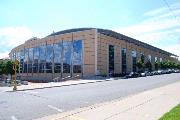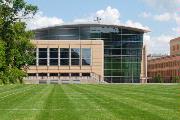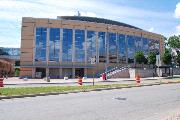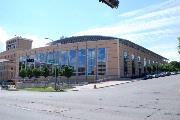Property Record
1550 ENGINEERING DR
Architecture and History Inventory
| Historic Name: | Engineering Centers Building |
|---|---|
| Other Name: | Engineering Centers Building (UW#0481) |
| Contributing: | |
| Reference Number: | 160493 |
| Location (Address): | 1550 ENGINEERING DR |
|---|---|
| County: | Dane |
| City: | Madison |
| Township/Village: | |
| Unincorporated Community: | |
| Town: | |
| Range: | |
| Direction: | |
| Section: | |
| Quarter Section: | |
| Quarter/Quarter Section: |
| Year Built: | 2002 |
|---|---|
| Additions: | |
| Survey Date: | 20092022 |
| Historic Use: | university or college building |
| Architectural Style: | Contemporary |
| Structural System: | |
| Wall Material: | |
| Architect: | Flad and Associates |
| Other Buildings On Site: | |
| Demolished?: | No |
| Demolished Date: |
| National/State Register Listing Name: | Not listed |
|---|---|
| National Register Listing Date: | |
| State Register Listing Date: |
| Additional Information: | The Engineering Centers Building exhibits good design throughout, and its interior and exterior are well integrated. The Engineering Centers Building won the AIA Wisconsin honor award in 2003. Former College of Engineering Dean John Bollinger envisaged a new engineering building that would provide an interactive educational environment for students and be sensitive to its surroundings. Kohn Pedersen Fox Associates of New York, working in association with a Madison firm, Flad and Associates, accommodated several concerns, including those related to the proposed building’s location within an engineering complex adjacent to a historic residential area. The building’s buff-brick and precast wall panels harmonize with the random ashlar limestone sheathing of the neighboring Mechanical Engineering Building. But at its north end, a convex window curtain wall trimmed with aluminum mullions and precast concrete softens its rectangular form, curving back to preserve the view of the First Congregational Church across the street. Finally, the curved standing-seam aluminum roof, punctuated by ribbed fins, slopes towards the adjacent neighborhood, lowering its profile. A glass-curtain wall prow, supported by inclined steel columns, lights a 70-foot atrium from the southern end. Clerestory windows, which narrow as they move north from the prow, focus daylight into the atrium. The atrium was meant to foster personal interaction by making people and activities visible on several floors at once. Inside, sunlight illuminates Scott Parsons’ colorful fractal-inspired terrazzo floor, “Algorithmic Tapestry,” which incorporates images of engines, circuits, crystals, particle tracks, stars, and ancient cave markings. R. Buckminster Fuller’s stainless steel tube and wire sculpture, “Sixty Strut Tensegrity Sphere,” hovers above the south entrance. The atrium’s first floor overlooks the Phillips Plastics Discovery Center, a lower level laboratory where students can watch others creating engineering projects. The first floor terrazzo and wall design directs occupants and visitors west to conference rooms, a presentation room, and a multi-purpose auditorium with movable media boards. Galvanized steel-plate steps, stainless steel balustrades, and cast concrete walls create an industrial appearance, with ash floors and trim, maple accents, and veneers adding warmth. A polycarbonate screen “technology wall” forms the atrium’s west wall. Opaque by day, by night the wall exposes the building’s plumbing, electrical, mechanical, and telecommunication systems. These exposed building and infrastructure systems articulate Dean Bollinger’s call to make the building itself a learning tool. |
|---|---|
| Bibliographic References: | University of Wisconsin-Madison: Update to the Preliminary Evaluation of Buildings and Structures for Eligibility for the National Register of Historic Places, June 13, 2023. University of Wisconsin-Madison: Preliminary Evaluation of Buildings and Structures for Eligibility for the National Register of Historic Places. September 2009. Buildings of Wisconsin manuscript. |
| Wisconsin Architecture and History Inventory, State Historic Preservation Office, Wisconsin Historical Society, Madison, Wisconsin |





